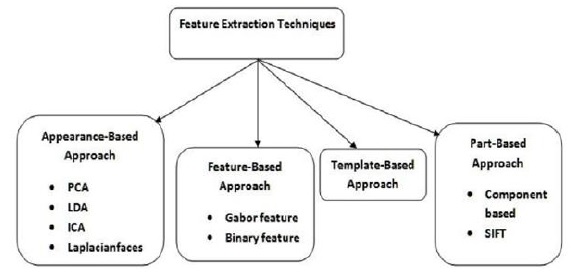Framework for the Development of an Enhanced Machine Learning Algorithm for Non-Cognitive Variables Influencing Students’ Performance using Feature Extraction
DOI:
https://doi.org/10.31033/abjar.2.4.6Keywords:
hierarchical, educational, classifiers, non-cognitive, droppingAbstract
Machine learning is a powerful tool for creating computational models in scientific analysis in areas where there is need to extract hidden data such as educational data. In order to make planning easier and identify at-risk students who may be in danger of failing or dropping out of school due to their academic performance, Educational Data Mining (EDM) uses computational tools. In this paper, a framework using machine learning approach was proposed to develop an enhanced algorithm for non-cognitive variables influencing students’ performance using feature extraction. In the framework, the Decision Tree (DT) and Linear Support Vector Machine (SVM) are proposed as base classifiers, and Random Forest (RF) and Gradient Boosting (GB) as ensemble classifiers. The DT classifier allows the classification process to be modelled as a series of hierarchical decisions on the features, forming a tree-like structure. Using this technique, planning and predicting students who might be at-risk of dropping out would have been made easier.
Downloads
References
Bharati, M., & Ramageri, B. (2010). Data mining techniques and applications. Indian Journal of Computer Science and Engineering.
Baker & Ryan. (2010). Data mining for education. International Encyclopedia of Education. 7, 112-118.
Mariam Khaled, & Alsedrah. (2017). Artificial intelligence. America University of The Middle East. doi: 10.13140/RG.2.2.18789.65769. Available at: https://www.researchgate.net/publication/323498156_Artificial_Intelligence.
Liu, J., Kong, X., Xia, F., Bai, X., Wang, L., Qing, Q., & Lee, I. ((2018). Artificial intelligence in the 21st century. IEEE Access, 1(1), 10.1109.
Sara Brown. (2021). Machine learning, explained. Available at: https://mitsloan.mit.edu/ideas-made-to-matter/machine-learning-explained.
Çelik, Ö, & Altunaydın, S.S. (2018). A research on machine learning methods and its applications. Journal of Educational Technology & Online Learning, 1(3), 25-40.
Gör, İ. Vektör, Nicemleme İçin, Geometrik Bir, Öğrenme Algoritmasının, & Tasarımı ve Uygulaması. Yüksek lisans tezi, Adnan Menderes Üniversitesi, Aydın.
Tantuğ, A. C., & ve Türkmenoğlu, C. (2015). Türkçe metinlerde duygu analizi. Yüksek lisanstezi, İstanbul Teknik Üniversitesi, İstanbul.
Malhotra, P. (2016). Why machine learning is being given so much Importance?. Delhi: India.
Brownlee, J. (2015). Basic concepts in machine learning. Retrieved Machine Learning Mastery.
Deep AI. (2022). Feature extraction. Available at: https://deepai.org/machine-learning-glossary-and-terms/feature-extraction.
Pier, P. I. (2019). Feature extraction techniques. Published in Towards Data Science. Available at: https://towardsdatascience.com/feature-extraction-techniques-d619b56e31be.
Wen Xiao, Ping Ji, & Juan Hu. (2021). A hybrid feature selection method for predicting students. Hindawi Scientific Programming, 16. https://doi.org/10.1155/2021/1670593.
Polyzou, A., & Karypis, G. (2018). Feature extraction for classifying students based on their academic performance. 11th International Conference on Educational Data Mining. EDM , Buffalo, United States.
Balan, S., & Sunny, L.E. (2018). Survey on feature extraction techniques in image processing. Available at: https://www.semanticscholar.org/paper/Survey-on-Feature-Extraction-Techniques-in-Image-Balan-Sunny/a5d8205ee67c873f2a2b46373d8e3d8000e00f48.
Student Handbook. Dept. of Computer Sciences, Available at: www.acu.edu.ng.
Pedregosa et al. (2011). Scikit-learn: Machine learning in python. JMLR, 12, 2825-2830.
Jared Wilber. (2022). Precision & recall: Accuracy is not enough. Available at: https://mlu-explain.github.io/precision-recall/.
Tabea Tietz. (2020). John mccarthy and the raise of artificial intelligence. Available at: scihi.org/john-mccarthy-artificial-intelligence.
Brian McGuire. (2006). The history of artificial intelligence, History of computing, CSEP 590A. University of Washington. Available at: https://courses.cs.washington.edu/courses/csep590/06au/projects/history-ai.pdf.
Sara Brown. (2021). Machine learning, explained. Available at: https://mitsloan.mit.edu/ideas-made-to-matter/machine-learning-explained.
Karimi, Zohreh. (2021). Confusion matrix. Available at: https://www.researchgate.net/publication/355096788_Confusion_Matrix.

Downloads
Published
How to Cite
Issue
Section
ARK
License
Copyright (c) 2023 Oguns Yetunde Josephine, AYENI Joshua Ayobami, Ganiyu Aminat Abidemi

This work is licensed under a Creative Commons Attribution 4.0 International License.
Research Articles in 'Applied Science and Biotechnology Journal for Advanced Research' are Open Access articles published under the Creative Commons CC BY License Creative Commons Attribution 4.0 International License http://creativecommons.org/licenses/by/4.0/. This license allows you to share – copy and redistribute the material in any medium or format. Adapt – remix, transform, and build upon the material for any purpose, even commercially.










